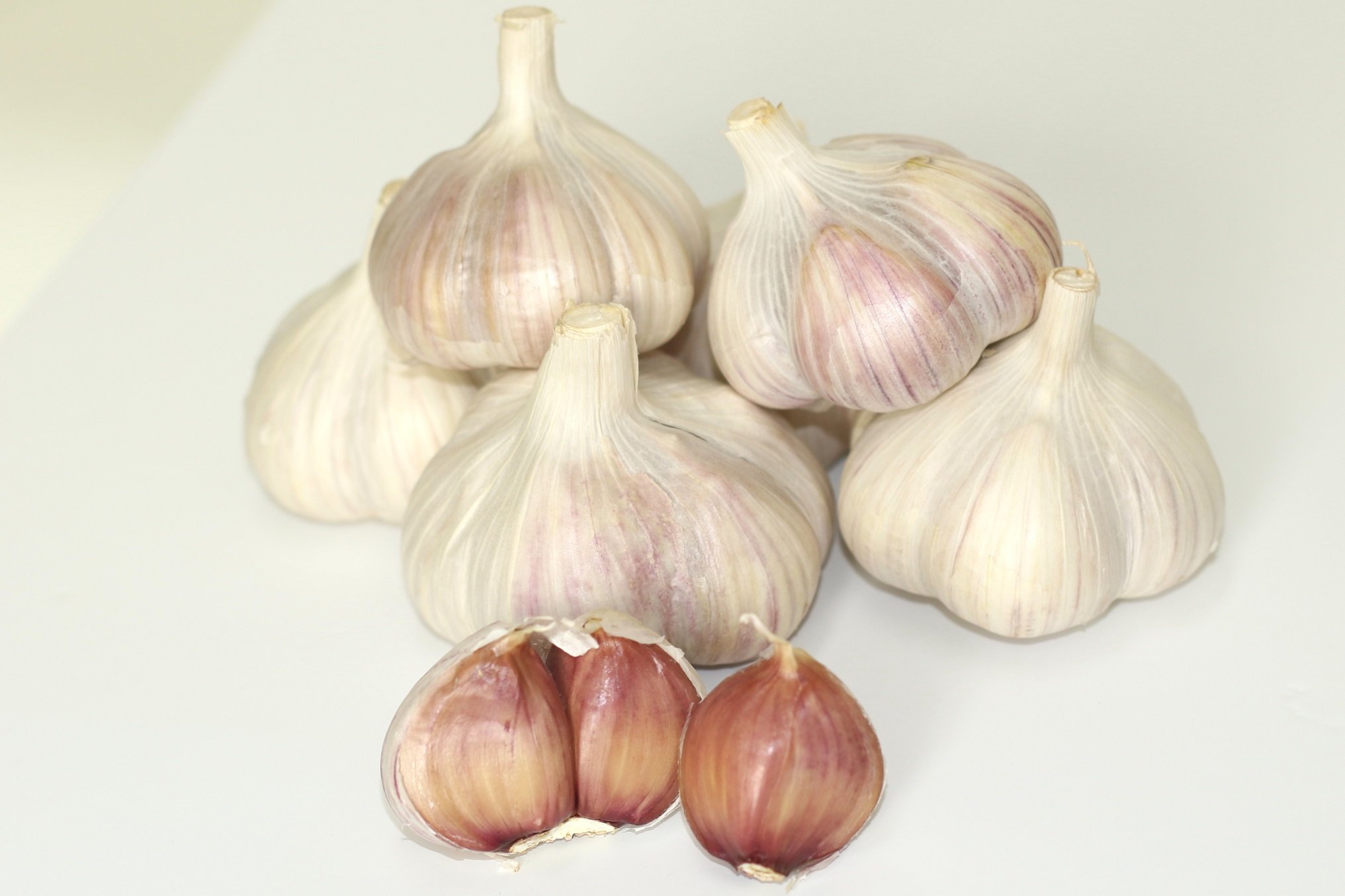Tokoro Pink Ninniku
| Registration Number | 120 |
|---|---|
| Name of the GI | Tokoro Pink Ninniku , TOKORO PINK GARLIC |
| Class | Vegetables/ Cereal grains/Pulses |
| Date of Protection | 2022/03/31 |
| Producing Area |
Hokkaido
Tokorocho, Kitami City |
| Applicant - Name and Address | JA Tokoro 608, Tokoro, Tokorocho, Kitami City, Hokkaido Prefecture |
| Brand-site |
Producing Area
"Tokoro Pink Ninniku", a garlic native to Hokkaido, has been cultivated since the pioneer days of Hokkaido. It is characterized by a pink skin, strong flavor and scent of natural garlic, and pungent taste when eaten fresh.
Compared to other general garlic varieties distributed in Japan, it has higher contents of sugar, odorant, and pungent components and is rated as having "pungency of high impact" by the market and users who favor strong pungency and scent of garlic.
For "Tokoro Pink Ninniku", seed cloves that are selected and propagated based on the propagation system stipulated by JA Tokoro are used.
Cultivation is performed by following the propagation system of the JA. The seed is periodically renewed.
The grown garlic is screened based on the JA's guideline for handling garlic produced in the year. Bulbs that are free of insect, pest or other damage and have a bulb diameter of at least 35mm are shipped as "Tokoro Pink Ninniku".
The production area is located on the coast of the Sea of Okhotsk (1). It becomes very cold in winter as drift ice (2) approaches the coast, creating an inland climate. Strong winds and scarce snow cover cause the soil to freeze and the soil surface to dry. Thus, it is an area where general garlic is difficult to overwinter. The pink native variety adapts to the severe climatic conditions of the cold region and has long been cultivated in the area.
The skin of "Tokoro Pink Ninniku" contains a large amount of phenol compounds, which give the reddish color. They are likely to be formed by environmental stresses, such as cold and drying stresses in winter, supporting the strong pungency and scent and the skin being pink at the time of harvest.
In the production area, full-scale cultivation of the pink garlic started in 1962. Because of its high adaptability, the cultivation area increased to 116ha in 1973, making the town the top garlic producing municipality in Japan. The cultivation area decreased to 0.9ha thereafter because the appearance deterred consumers, the price stagnated, and crops were switched in line with the mechanization of farming.
In recent years, contract farming of "Tokoro Pink Ninniku" has started due to attention for its high functionality as a pharmaceutical raw material, and the unique propagation system has further improved quality and yields. The cultivation area recovered to 11ha in 1994, and stable production became possible.
- The Sea of Okhotsk is located between the island of Sakhalin to the west, the east coast of Eurasia to the north, Kamchatka Peninsula to the east, and the Kuril Islands and the northeastern coast of Hokkaido to the south. In Japan, it is famous for drift ice, which can be observed in the cities of Kitami and Abashiri in winter.
- Drift ice (ryuhyo) in the Sea of Okhotsk is formed in winter by sea water freezing near the mouth of the Amur River, where river water flows into the sea, and drifting toward the south, reaching the coast of Hokkaido. It is a feature of the winter season in Japan.


